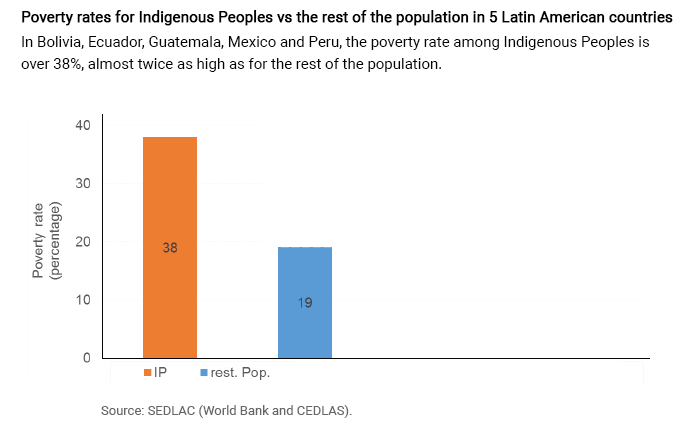Indigenous Peoples face poverty rates that are on average twice as high as for the rest of Latin Americans. This fact is probably not a surprise to most readers of this blog. More intriguing, however, are three additional findings from recent work on the topic.
First, until recently, we did not have as robust quantitative evidence of such poverty gaps as that found in the recent World Bank report Indigenous Latin America in the Twenty-First Century. In fact, not all countries in the region have data on poverty by ethnicity and fewer still have the micro-data needed to understand the stumbling blocks that Indigenous Peoples face on the path out of poverty.
Second, the gap between the poverty rate of Indigenous Peoples and the rest of the population is not getting smaller. In some countries the gap remains stagnant and in others it is actually widening. Why are Indigenous Peoples benefiting less from growth and more likely to be poor? One way to explore these issues is to disentangle how much of the poverty gap between Indigenous and non-Indigenous populations can be explained by factors such as that indigenous peoples tend to live in rural areas, have lower education, etc. The results of such analysis bring us to my final point, illustrated in the chart below.

*Variables include characteristics of the head of the household (education, age, and gender), family composition (number of non-working members), geographical characteristics (country of residence, rural status) and employment characteristics of the head (sector of employment and occupation).
Third, even after we take into account demographic and economic differences between Indigenous Peoples and the rest of the population – for example, the likelihood of living in rural areas and educational attainment – Indigenous Peoples are still more likely to be poor. When we take a close look at the five countries for which we have the most detailed data (Bolivia, Ecuador, Guatemala, Mexico and Peru) and perform such analysis, we find something remarkable.
Only about half the gap in poverty rates between Indigenous and non-Indigenous Peoples can be accounted for by differences in characteristics like the level of education of the head of the household, the sector of employment, residence in urban or rural areas, or the number of dependents in the family. This leaves a very large 'unexplained' gap. How can this be? One reason is that even if an Indigenous person completes a given level of education, his or her earnings are often much lower than those of a non-Indigenous person with the same level of education. These results suggest that Indigenous Peoples face specific challenges in benefiting from growth and getting out of poverty.
Note: This blog is part of the 'lacfeaturegraph' monthly series from the LAC Equity Lab team. To look at past posts, please visit here.


Join the Conversation